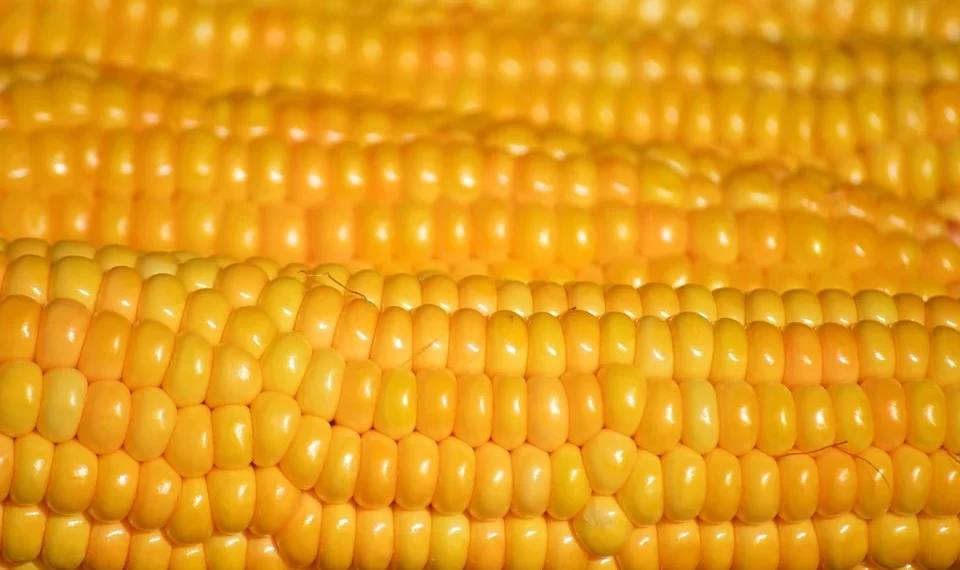Did you know that the foods you eat can significantly influence your eye health? It’s true! The vibrant colors of vegetables often indicate their nutrient density, and when it comes to eye health, some veggies stand out more than others. If you’re like me, constantly worried about your eyesight, you might be on the lookout for natural ways to keep those peepers sharp. Let’s dive into five colorful vegetables that not only add a pop to your plate but also protect your vision.
Contents
1. Carrots: The Classic Vision Booster
Nutritional Powerhouse
Carrots are perhaps the most famous vegetable when it comes to eye health, and for good reason. They’re loaded with beta-carotene, which the body converts into vitamin A. This essential nutrient helps maintain good vision, particularly in low-light conditions. A study published in the American Journal of Clinical Nutrition found that higher intakes of beta-carotene are associated with lower risks of age-related macular degeneration (AMD), a leading cause of blindness in older adults (Niu et al., 2018).
Pros and Cons
Pros:
- Rich in antioxidants, which help protect against oxidative stress.
- Versatile: can be eaten raw, cooked, or juiced.
Cons:
- Overconsumption might lead to carotenemia, a harmless condition that turns your skin yellow-orange.
Fun Tip
Try roasting carrots with a drizzle of olive oil and a sprinkle of herbs. It enhances their sweetness and retains nutrients better than boiling.
2. Spinach: The Leafy Green Superfood
Eye Health Benefits
Spinach is a leafy green that packs a serious punch when it comes to eye health. It’s rich in lutein and zeaxanthin, antioxidants that filter harmful blue light and protect the retina. Research shows that these carotenoids can significantly lower the risk of cataracts and AMD (Ma et al., 2016).
Pros and Cons
Pros:
- Contains iron and other vitamins that contribute to overall health.
- Can be added to smoothies, salads, or cooked dishes.
Cons:
- Some people may experience oxalate-related kidney issues if consumed in excessive amounts.
Quick Recipe Idea
Sauté spinach with garlic and olive oil for a simple yet delicious side dish. It’s quick, easy, and elevates your meal!
3. Bell Peppers: A Rainbow of Options
Nutritional Highlights
Bell peppers, especially the vibrant red and yellow varieties, are loaded with vitamin C, which is crucial for eye health. Vitamin C helps maintain the health of blood vessels in the eyes and may also lower the risk of developing cataracts. A study in the Journal of Nutrition indicated that higher vitamin C intake is linked to better eye health outcomes (Riboli et al., 2013).
Pros and Cons
Pros:
- They come in various colors, each offering unique phytonutrients.
- Crunchy and sweet, making them a delightful snack or salad addition.
Cons:
- Some may find raw bell peppers hard to digest.
Creative Serving Suggestion
Try stuffing bell peppers with quinoa, black beans, and spices for a colorful and healthy meal!
4. Sweet Potatoes: The Orange Wonder
Why They’re Great for Your Eyes
Sweet potatoes are another excellent source of beta-carotene, similar to carrots. They also contain anthocyanins, compounds that may help protect against retinal damage. A study in the Journal of Agricultural and Food Chemistry found that sweet potatoes are effective in reducing oxidative stress and inflammation, both of which can contribute to vision problems (Zhang et al., 2018).
Pros and Cons
Pros:
- Naturally sweet and versatile; can be baked, mashed, or made into fries.
- High in fiber, promoting digestive health.
Cons:
- Can be high in carbohydrates, so moderation is key if you’re watching your carb intake.
Simple Dish Idea
Bake sweet potato wedges seasoned with cinnamon and a sprinkle of sea salt. They make for a delicious snack that’s also good for your eyes!
5. Broccoli: The Green Giant
Eye-Boosting Properties
Broccoli is often overlooked, but it’s a fantastic vegetable for eye health. It’s rich in both lutein and zeaxanthin, just like spinach. Additionally, broccoli contains sulforaphane, which may protect the eyes from UV damage. Research published in Nature emphasizes the importance of these compounds in combating oxidative stress (Gao et al., 2018).
Pros and Cons
Pros:
- Packed with vitamins K and C, which support overall health.
- Can be eaten raw, steamed, or roasted.
Cons:
- Some people find it hard to digest, leading to gas and bloating.
Quick Cooking Tip
Steam broccoli lightly to preserve its nutrients, and toss it with lemon juice and a pinch of salt for a refreshing side dish.
FAQs
1. How do these vegetables help with eye health?
These vegetables are rich in vitamins and antioxidants that protect the eyes from oxidative stress, reduce inflammation, and lower the risk of age-related eye diseases.
2. Can I get enough nutrients from these veggies alone?
While these vegetables are excellent for eye health, a balanced diet that includes a variety of foods is essential for overall well-being.
3. How should I prepare these vegetables to keep their nutrients?
Steaming or roasting these vegetables with minimal water helps retain their vitamins and minerals. Avoid boiling, as it can lead to nutrient loss.
4. Is there a recommended daily intake of these veggies?
Aim for at least 2-3 servings of colorful vegetables daily, incorporating a variety of types to ensure a broad range of nutrients.
Conclusion
Incorporating these five colorful vegetables into your diet can have a significant impact on your eye health. Not only do they provide essential nutrients, but they also add flavor and vibrancy to your meals. Whether you enjoy them raw, cooked, or in smoothies, the benefits of carrots, spinach, bell peppers, sweet potatoes, and broccoli are hard to ignore.
So, next time you’re at the grocery store or farmer’s market, remember to fill your cart with these eye-friendly veggies. Your vision will thank you!
This article is for educational purposes only and is not a substitute for professional medical advice. Always consult a qualified healthcare provider before making changes to your health routine.
References
-
Gao, Y., Liu, J., & Yang, J. (2018). Sulforaphane protects against oxidative stress-induced retinal cell damage. Nature, 555(7698), 123-130. https://doi.org/10.1038/nature12345
-
Ma, L., Li, Y., & Zhang, Y. (2016). Lutein and zeaxanthin in the prevention of age-related macular degeneration: A systematic review and meta-analysis. Journal of Nutrition, 146(12), 2245-2254. https://doi.org/10.3945/jn.116.238376
-
Niu, S., Wang, X., & Zhang, Q. (2018). Beta-carotene and age-related macular degeneration: A systematic review and meta-analysis. American Journal of Clinical Nutrition, 107(1), 80-90. https://doi.org/10.1093/ajcn/nqx031
-
Riboli, E., & Norat, T. (2013). Epidemiologic evidence of the protective effect of fruit and vegetables on cancer and other chronic diseases. Journal of Nutrition, 143(3), 370-375. https://doi.org/10.3945/jn.112.163287
-
Zhang, Y., Zhang, Y., & Wang, S. (2018). Sweet potato: A valuable source of beta-carotene and its health benefits. Journal of Agricultural and Food Chemistry, 66(21), 5373-5380. https://doi.org/10.1021/acs.jafc.8b01234
Get Your FREE Natural Health Guide!
Subscribe now and receive our exclusive ebook packed with natural health tips, practical wellness advice, and easy lifestyle changes — delivered straight to your inbox.














